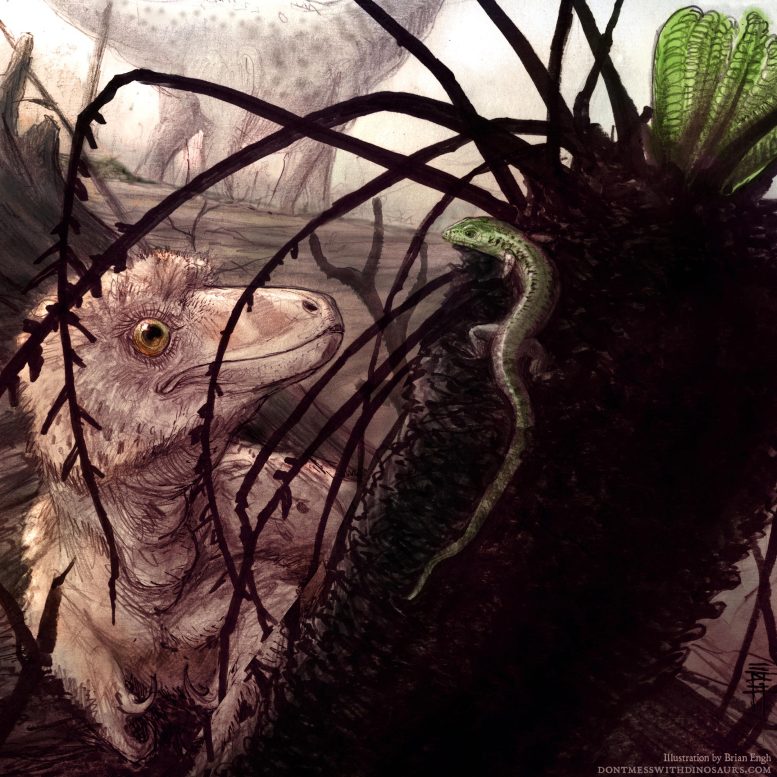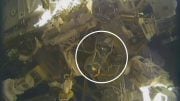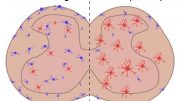
Baby Deinonychus investigates a Sciroseps pawhuskai on the charred remains of a cycad. Credit: Illustration by Brian Engh, http://dontmesswithdinosaurs.com
UW Oshkosh vertebrate paleontologist on research team.
Two tiny new species that inhabited part of what is now the American south some 100 million years ago have been discovered by a team of researchers that includes a University of Wisconsin Oshkosh paleontologist.
Joseph Frederickson, a vertebrate paleontologist and director of the Weis Earth Science Museum on the Fox Cities campus, is among the authors on a recent paper published in PeerJ, highlighting these new discoveries in southwest Arkansas. The species are small lizard researchers named Sciroseps pawhuskai and a fish named Anomoeodus caddoi.
The paper is titled A new vertebrate fauna from the Lower Cretaceous Holly Creek Formation of the Trinity Group, southwest Arkansas, USA. Celina Suarez, associate professor of geosciences at the University of Arkansas, served as the primary author on the article, which pulls together decades of research in the area known as the Holly Creek Formation. Frederickson is the second author.
“The Holly Creek Formation is interesting because few fossils have been described in publications, even though it has produced dinosaur fossils in the past,” Frederickson said. “Formations like these help us better understand how the continent was connected and the diversity of animals alive during the Early Cretaceous Period.”
The discoveries serve both to underscore the variety of fossils found at this site, including dinosaurs, mammals, fish, amphibians, and reptiles, and to reinforce the overall lack of variety of fossils found throughout North America from the period.
“The fish and lizard represent material, though small and fragmentary, that preserves enough detail to call them new species,” he said. “The lizard jaw is specifically interesting because normally fossils are limited to small and broken bits, while the specimen we describe in this paper is most of a complete lower jaw.”
Frederickson began work with the project in 2017. The previous year he started work with Suarez on a fossil-bearing site in Montana.
His part of the Arkansas project included investigating the micro-fossils, or small materials that required microscopes to see in detail. This included the fish, amphibians, reptiles and dinosaurs teeth. He compared these fossils with those from similarly aged rocks in Oklahoma, Montana, and Maryland to determine which species were present and then photographed the material using a scanning electron microscope.
This latest published work comes a year after Frederickson made headlines for another published paper. In 2020, he presented evidence that Velociraptors likely did not hunt in large, coordinated packs as famously depicted in the Jurassic Park films. This latest research, of course, focuses on creatures far less glamorous than the immortalized by Hollywood raptors.
“I think this paper is a good reminder that the fossil record preserves many different animals, not just dinosaurs,” he said. “This paper focuses heavily on the tiny organisms crawling or swimming at the feet of giant dinosaurs, which too often go undocumented because they can be difficult to study. However, often it’s these small animals that tell us the most about the environment in which they lived.”
The study resulted from long-term investigations that began in Arkansas in the 1970s. That area is where thousands of sauropod and theropod tracks have been discovered, beginning in the 1980s.
Dinosaurs previously preserved from the site include at least one long-necked sauropod (likely Sauroposeidon), large theropods (a juvenile Acrocanthosaurus), an ankylosaur (armored dinosaur), and the small kickboxing raptor, Deinonychus.
A variety of very small fossils also was uncovered, including remains of sharks, bony fish, frogs, lizards, turtles, crocodilians, and mammals. Although unspectacular, these tiny bones and teeth document the presence of numerous species critical to understanding the ecosystem that lived in Arkansas millions of years ago.
The remains were preserved in rock that represents a brackish to freshwater environment that was likely a swampy area just inland from the ancient coast.
Reference: “A new vertebrate fauna from the Lower Cretaceous Holly Creek Formation of the Trinity Group, southwest Arkansas, USA” by Celina A. Suarez, Joseph Frederickson, Richard L. Cifelli, Jeffrey G. Pittman, Randall L. Nydam, ReBecca K. Hunt-Foster and Kirsty Morgan, 21 October 2021, PeerJ.
DOI: 10.7717/peerj.12242









Be the first to comment on "Discovery of New Tiny Fish and Lizard Species in Southwest Arkansas"